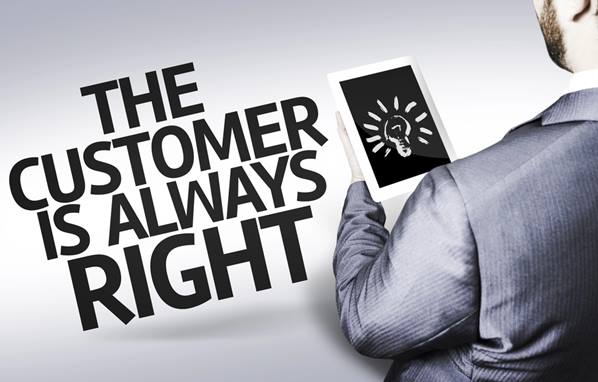
Catchy customer service slogans are powerful tools that encapsulate a company’s commitment to customer satisfaction in a memorable phrase.
In an era where faceless corporations dominate the market, businesses that dare to be human, to listen, and to empathize are the ones that rise above the noise. When crafted carefully, a great slogan can inspire employees and elevate customer expectations.
Think of a slogan as a brand’s calling card – a chance to showcase its unique voice, impress customers, and establish a connection that’ll last long after the first impression fades. The right slogan resonates with both staff and consumers, setting the tone for a positive and fruitful relationship.
The Importance of Customer Service Slogans
Customer service slogans play a pivotal role in shaping a brand’s identity. They communicate the company’s commitment to customers in a memorable way. These slogans help to establish expectations and convey values.
Incorporating customer service slogans into marketing strategies can enhance brand recognition. A well-crafted slogan sticks with customers and creates a lasting association with the brand. It serves as a powerful tool for differentiation in competitive markets.
Benefits of Effective Slogans:
- Memorability: A catchy slogan ensures that customers remember the brand long after an interaction
- Trust Building: Slogans that emphasize reliability and care can help foster trust among consumers.
They also serve as internal motivators. Employees are constantly reminded of the company’s service standards. This can improve overall service quality and consistency.
Visually, a slogan can be used in various marketing materials, such as brochures, advertisements, and digital platforms, reinforcing the message across customer touchpoints. Consistency in messaging ensures that the brand’s promise is clear and omnipresent.
In the ever-evolving landscape of customer expectations, having a defining slogan keeps a company focused on its core service principles. This focus can lead to increased customer satisfaction and loyalty over time.
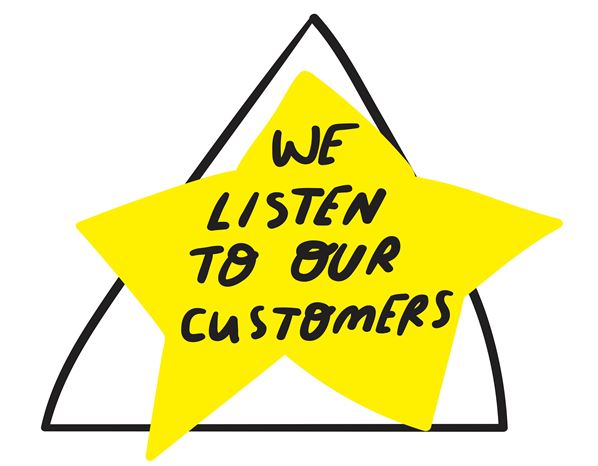
Crafting Effective Slogans
Crafting effective customer service slogans involves understanding your audience’s needs, using creative language, and valuing brevity. Memorable slogans should connect with the audience, resonate with their values, and be easy to recall and appreciate.
Get to know the people you’re trying to reach
This is the foundation of successful communication. You can’t create a message that resonates without understanding what makes your audience tick.
When you take the time to learn about your audience, you’ll find that your slogan almost writes itself. It involves researching their demographics, interests, and pain points. A slogan should reflect the values and expectations of the target market.
Appealing slogans are ones that address specific customer needs or preferences. For instance, if the audience values reliability, the slogan could highlight dependability. A customer profile helps in crafting messages that engage and persuade the audience.
If targeting younger audiences, consider witty or trendy phrases.
For a professional group, formal and straightforward language may be better.
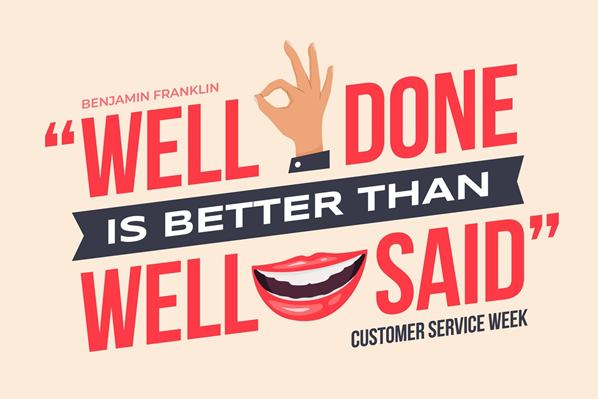
Using Language Creatively
Language is a powerful tool in slogan creation. Using alliteration, rhyme, or puns can make a slogan more memorable. Creative language fosters an emotional connection, making slogans stick in customers’ minds.
Metaphors or vivid imagery can also enhance recalls and evoke emotions. Creativity should align with the brand’s voice, ensuring consistency with its overall messaging strategy.
Lists and tables can make a quick comparison of words or phrases, helping to identify which best conveys the desired message. It’s not just about being clever; it’s about being effectively clever.
Prioritizing Brevity
Brevity is essential in successful slogans. Short and concise slogans are easier to remember and repeat. They should convey the essence of the message using few words without losing impact.
Examples might include brands like Nike with “Just Do It.” These slogans use economy of language to leave a lasting impression. Avoid jargon or complex language that may confuse or alienate the audience. A succinct slogan can powerfully encapsulate the brand’s promise or ethos.
Incorporating Company Values
Incorporating company values into customer service slogans enhances brand identity. What a company stands for should shine through in its values, showcasing the character it wants to be known for.
To integrate values, the company must first identify core principles. These could include integrity, innovation, or customer-centricity. For instance, if innovation is a core value, the slogan might highlight cutting-edge service.
A catchy slogan should align with the mission statement. If a company values integrity , they could emphasize transparency in their service promises. This consistency builds trust with customers.
Using a bold or italic format can emphasize key value-driven words in a slogan. For example, emphasizing words like trusted or dedicated can resonate with the audience.
Creating slogans that reflect values can also involve team brainstorming sessions. Employees may contribute ideas, ensuring the slogan is authentic and reflective of the company’s ethos.
Slogans should not only be memorable but actionable. The team should commit to implementing the values articulated in the slogan. This means customer service interactions should reflect these principles in practice.
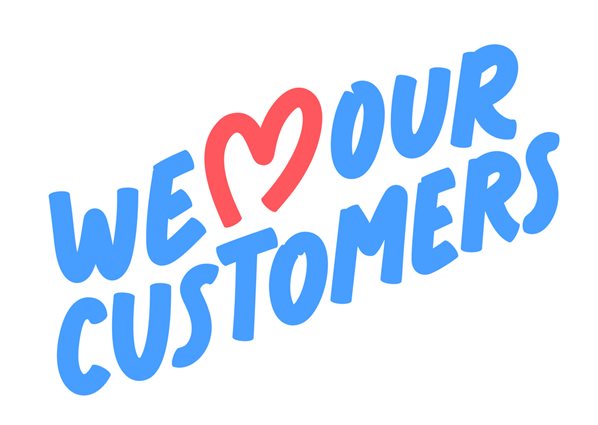
Here’s a simple list to illustrate the connection between values and slogans:
Core Value Slogan Example
- Innovation: “Leading the Future of Customer Care”
- Integrity: “Transparency You Can Trust”
- Customer Focus: “Your Needs, Our Priority”
Regular reviews of values and slogans ensure they remain relevant and aligned with organizational goals. Injecting these phrases into your message injects a shot of confidence into your audience, as if to say, “Hey, we’ve got this, and you can trust us.”
Aligning Slogans with Brand Identity
Creating a connection between customer service slogans and brand identity ensures consistency and strengthens brand recognition. This alignment helps convey the core values and messages the brand represents.
For instance, a brand emphasizing luxury and exclusivity should use a sophisticated tone in its slogans. Elegant and refined language can reinforce the brand’s high-end image and attract the intended audience.
A youthful and energetic brand might choose vibrant and playful slogans. This reflects a dynamic identity, appealing to a younger demographic and promoting an image of innovation and excitement.
Brands focused on reliability and trustworthiness should aim for reassuring and confident slogans.
Creating a list of core brand values can guide the development of effective slogans:
- Innovation
- Customer-first mindset
- Sustainability
- Integrity
These keywords can serve as inspiration, ensuring the slogans resonate with the brand’s mission and ethos.
Using consistent language and design elements in slogans is crucial. Aligning fonts, colors, and overall style with brand guidelines supports cohesion across all marketing materials.
Incorporating elements like alliteration , rhyme , or simple wordplay can make slogans memorable and engaging. This technique captures attention without deviating from the essence of the brand.
Every slogan should be tested for its effectiveness in conveying the desired message. Obtaining feedback from stakeholders and customers can provide valuable insights into potential improvements.
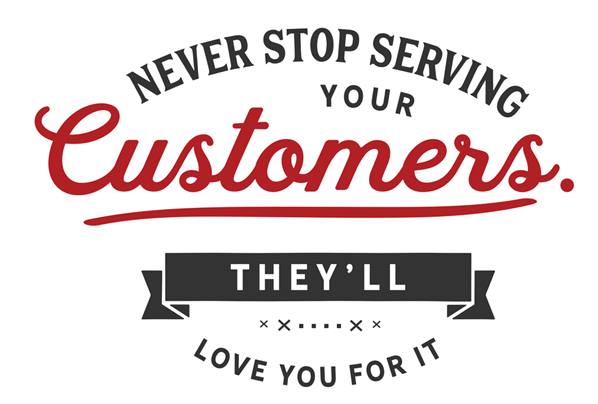
Examples of Successful Slogans
Just Do It by Nike emphasizes simplicity and encouragement. This slogan inspires action and has become iconic in the world of sports and beyond.
Another effective slogan is Because You’re Worth It by L’Oréal.
Coca-Cola’s slogan, Taste the Feeling, focuses on the emotional experience of enjoying their beverage. This has helped cement the brand as a symbol of happiness and togetherness.
The classic phrase Have a Break, Have a Kit Kat uses a rhyme and repetition technique that makes it memorable. Kit Kat effectively associates their product with the concept of taking a restful break.
American Express cleverly uses Don’t Leave Home Without It to create a sense of indispensability. This slogan reinforces the brand’s status as an essential travel companion.
Apple captured attention with their slogan Think Different. By encouraging innovation and individuality, it positions the brand as a leader in creativity and technology.
Red Bull’s It Gives You Wings slogan highlights the brand promise of energy and vitality, making it well-suited for its target audience who live active lifestyles.
Subway’s slogan Eat Fresh underlines their commitment to providing fresh ingredients, which can appeal to health-conscious customers and position them distinctively in the fast-food industry.
Each of these slogans effectively captures the essence of the brand while resonating deeply with their audiences.
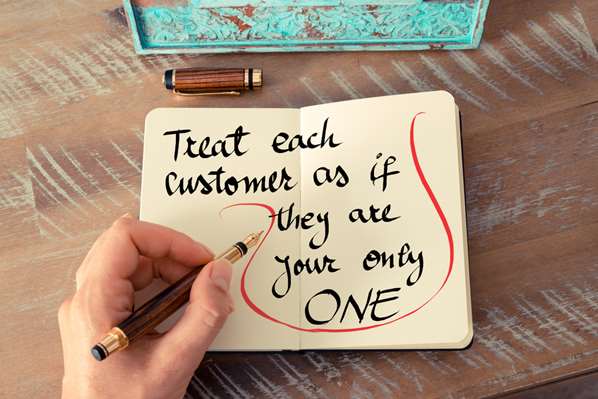
Evolving Slogans for Modern Customers
Slogans today must align with changing customer expectations, incorporating current trends, diverse perspectives, and innovative platforms. Companies are adopting new strategies to ensure their messages resonate.
Keeping Up with Trends
Modern customers expect businesses to reflect current cultural and technological movements in their branding. Staying relevant requires brands to stay informed of shifting preferences and emerging innovations.
By integrating elements like sustainability, technological advancements, and evolving communication methods, slogans can build a stronger connection with the audience. Adapting language and style to reflect popular culture and digital evolution helps maintain consumer loyalty and interest.
Businesses benefit from regularly revising their slogans to ensure they align with contemporary interests, solidifying their presence in a competitive market.
Embracing Diversity in Messaging
Diversity in customer service slogans means recognizing the varied backgrounds, cultures, and languages of a global audience. Effective slogans must be inclusive, resonating with individuals from different demographics. Incorporating diverse perspectives ensures customers feel seen and valued.
A wider audience is won over when companies infuse their marketing mix with sensitivity to individual differences, reflecting the rich tapestry of cultures, voices, and values. Crafting a message that celebrates differences fosters stronger customer relationships and enhances brand reputation. This conscious effort in inclusivity communicates a commitment to embracing all communities.
Leveraging Social Media
Social media platforms offer a dynamic space for slogans to gain traction and reach a wider audience. Creativity and brevity are crucial in adapting messages to suit these fast-paced environments.
Brands leverage these platforms to test new slogans and gauge consumer reactions almost instantaneously. This feedback helps them refine their messaging for maximum impact. Engaging with users in real-time through creative slogans fosters a sense of community and enhances brand visibility.
By understanding platform nuances and trends, businesses can create slogans that not only resonate but also encourage sharing, expanding their reach effectively.
Strategies for Testing Slogans
Testing slogans requires a strategic approach to ensure they effectively resonate with the intended audience. Methods include gathering customer feedback to understand audience reception and analyzing the performance of slogans through various metrics.
Gathering Customer Feedback
Customer feedback is essential in evaluating the effectiveness of a slogan. Companies can use surveys, focus groups, and interviews to collect opinions. Surveys can be distributed online or in person, asking participants to rate the slogans on clarity, impact, and memorability.
Focus groups involve engaging a small group in discussions about potential slogans, allowing for in-depth insights. Additionally, monitoring social media platforms and forums can provide real-time reactions to new slogan campaigns. By having a systematic approach to collecting customer input, businesses can refine their slogans to better align with customer preferences and expectations.
Analyzing Slogan Performance
To determine the effectiveness of a slogan, it’s crucial to analyze various performance metrics. Sales figures before and after launching a new slogan can offer quantitative data on its impact. Web traffic analytics can show changes in engagement levels, while click-through rates on digital ads can reveal effectiveness in attracting customer interest.
Additionally, conducting periodic brand recognition surveys helps measure long-term effects on brand recall. By tracking these indicators, businesses can make data-driven decisions to optimize their slogans for maximum impact.
Tips for Launching New Slogans
Create memorable and concise slogans. Brevity ensures easy recall. Aim for rhythm or rhyme to make them stickier. Test slogans with different groups. Gather feedback to ensure it resonates with the target audience.
Consider the emotional appeal of the slogan. It should align with the brand’s values and evoke the desired response. Use imagery and metaphors . They often help paint a clear picture in the audience’s mind, making slogans more impactful.
Incorporate branding elements like logos or colors. This integration ensures a cohesive brand message. A/B testing can be useful. Experiment with different versions of the slogan to see which performs best in real-world situations.
Include keywords relevant to the brand. This supports brand identity and message consistency. Regularly review and refresh slogans. Keep them relevant as the brand and market evolve.
Leverage social media to launch and promote new slogans. Platforms like Twitter and Instagram offer wide reach. Consider the linguistic and cultural nuances if launching globally. This prevents misunderstandings or misinterpretations. Focus on positive messages . Positivity often attracts and retains attention better.
Lastly, ensure the slogan is easy to pronounce . Linguistic simplicity aids in spreadability and recognition.
Slogans in Multi-Language Markets
Expanding into markets with multiple languages presents unique challenges for creating effective customer service slogans. This involves navigating cultural nuances and ensuring accurate translation and localization.
Cultural Considerations
Understanding cultural context is crucial when crafting slogans for diverse markets. A phrase that resonates in one culture may not have the same impact in another. Language carries cultural significance, which can alter a slogan’s meaning. Brands need to assess local customs, traditions, and societal norms to ensure their message aligns with the intended audience.
Consider symbolism and idiomatic expressions . A slogan featuring certain symbols may be revered in one region but offensive in another. Similarly, idioms can lose their impact when taken out of cultural context. Successful slogans often embody cultural resonance without diluting their core brand message.
Translation and Localization
Translation goes beyond converting words from one language to another. It’s essential to maintain the slogan’s original intent, tone, and emotion. This requires skilled translators who appreciate linguistic nuances. Literal translations can result in loss of meaning or tone. Consider local slang , colloquialisms , and phrases that can enhance relatability and appeal.
Localization further adapts the message to fit local cultural contexts, including images , colors , and symbols . This could mean adjusting design elements or selecting different words that better suit the local language. Effective translation and localization efforts help brands establish strong connections with new audiences, fostering trust and loyalty.
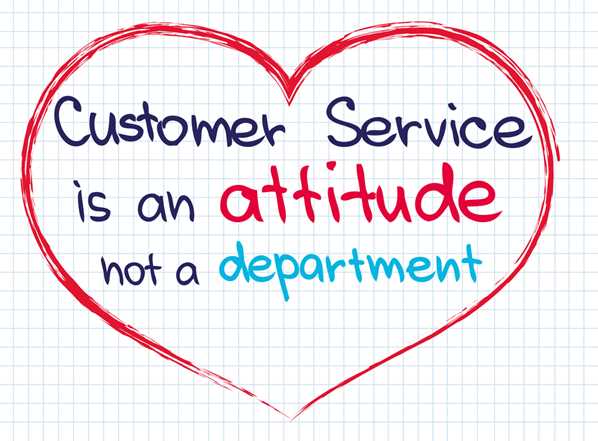
Maintaining Relevance of Slogans
Customer service slogans must evolve with changing market trends and consumer preferences. Atimely refresh ensures they resonate with the target audience. Keeping slogans fresh helps businesses stay connected and memorable.
Multiple factors influence whether a slogan remains effective. Cultural shifts , market changes, and technological advancements all play a role. Regular reviews allow companies to assess if their slogans align with current values and industry directions.
Consistency is key in maintaining relevance. While the underlying message can adapt, the core values of a brand should remain visible. This balance ensures slogans communicate both tradition and innovation.
Businesses should engage in customer feedback sessions. These valuable insights reveal how well a slogan connects with its intended audience. Feedback helps determine if a slogan requires tweaks or even a complete overhaul.
Incorporate social media analysis . Monitoring how often a slogan is shared or mentioned can indicate its popularity. A slogan’s ability to engage audiences online reflects its strength in modern contexts.
Staying aware of competitors’ strategies is beneficial. Benchmarking against industry leaders can provide insights into current trends. Understanding what works for them may inspire strategic adjustments to maintain relevance.
Regular brainstorming sessions can yield innovative slogans that capture attention. Creative collaboration encourages fresh ideas while adhering to brand principles. This approach ensures a steady pipeline of relevant slogans.
Innovative strategies and a flexible approach are paramount for sustaining the impact of customer service slogans. Organizations that adapt their slogans thoughtfully stand to enhance customer engagement continuously.
Legal Considerations in Slogan Creation
Creating a slogan involves various legal considerations. Trademark registration is crucial to protect a slogan from being legally used by another entity.
Smart companies know to dot their i’s when it comes to slogan development, scouring databases like the USPTO to sidestep messy trademark disputes and ensure their brand messaging remains rock-solid.
Copyright laws might also come into play. While slogans are generally not protected by copyright due to their short length, complex taglines or those imbued with creativity might be eligible. It’s important to consult with legal experts to discern the type of protection needed for a specific slogan.
Using descriptive or generic terms in slogans can make them difficult to protect. A good practice is to include distinctive and unique elements. Descriptive slogans can face challenges during the trademark registration process, as they may not sufficiently distinguish the brand’s products or services.
International concerns also matter. A company should consider differences in trademark laws if it operates in multiple countries. Registering a slogan globally can help avoid future conflicts and similar use across borders.
Enlisting the help of an intellectual property attorney can provide expert guidance. These professionals can assist with the nuances of registration, ensuring legal compliance and proper usage, while also handling any disputes or challenges that might arise.
Good luck in creating your catchy customer service slogans – don’t forget to let us know your slogan in the comments below!




